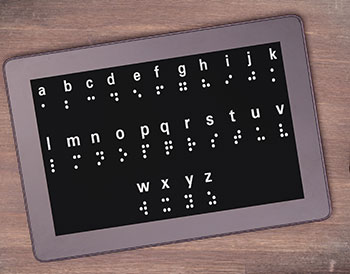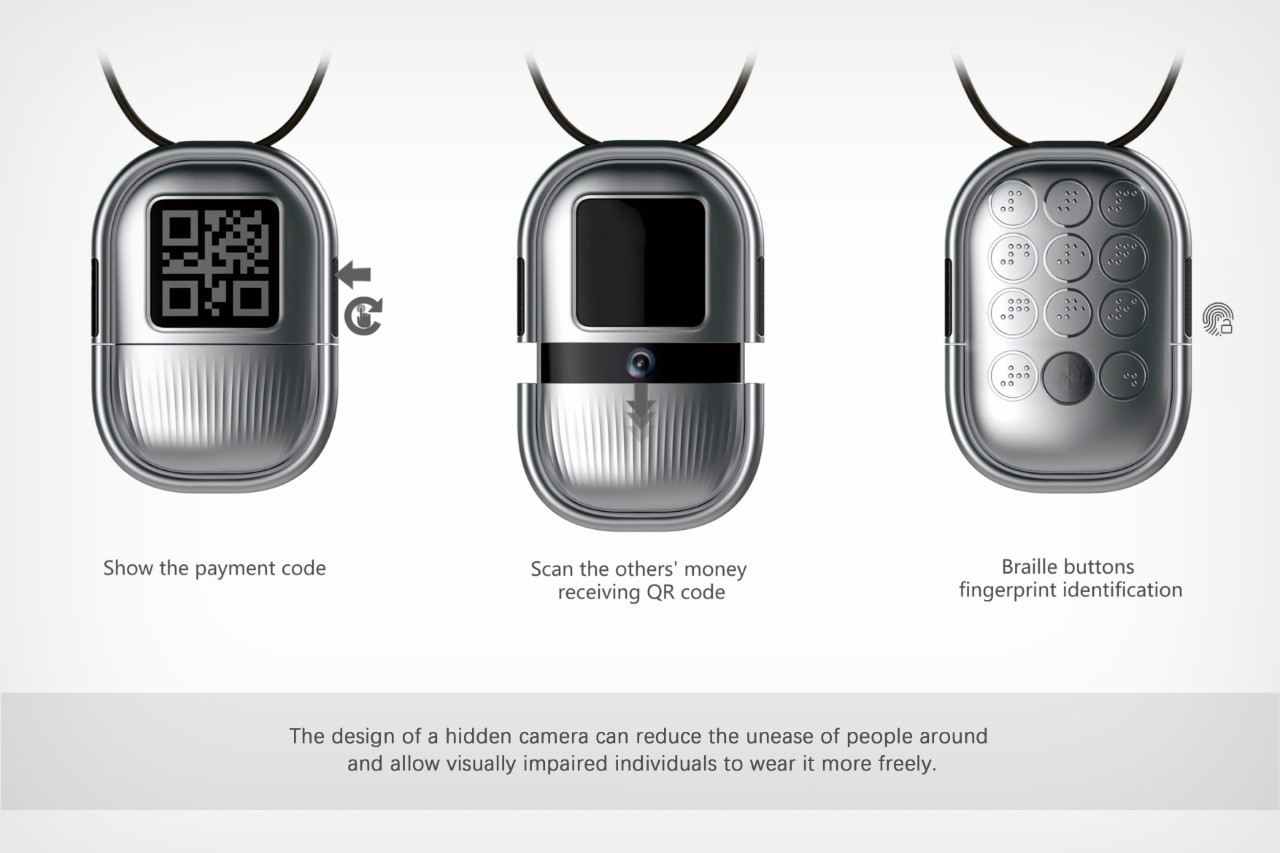Enhancing Lives With Advanced Assistive Devices for the Blind
The combination of innovative assistive gadgets for the blind is transforming just how individuals experience their environments and connect with their areas. What does this advancement mean for the future of assistive technology and its role in empowering individuals?
Review of Assistive Tools
Assistive devices for the blind encompass a varied variety of innovations and tools made to enhance independence and enhance the lifestyle for people with aesthetic problems. These tools deal with different demands, from navigation and mobility to communication and daily task administration.
One of the main groups of assistive devices consists of movement help, such as white walking sticks and guide canines, which aid customers navigate their surroundings safely. Digital traveling aids, outfitted with sensing units and audio responses, likewise play a significant duty in wheelchair improvement.
Furthermore, devices that assist with day-to-day living activities, such as flexible kitchen tools, Braille labels, and speaking watches, encourage individuals to carry out jobs individually. Interaction help, including screen readers and Braille screens, facilitate access to info and allow individuals to engage successfully with the electronic globe.
Furthermore, low-tech solutions like magnifying glasses and large-print products remain important for numerous customers. Collectively, these assistive gadgets serve not only as functional tools but likewise as vital enablers of autonomy, promoting higher involvement in a globe that typically prioritizes sighted experiences. Their combination right into day-to-day life is important for advertising inclusivity and improving overall health for those with visual impairments.
Cutting-edge Technologies in Use
Development in innovation has actually significantly transformed the landscape of tools readily available for individuals with visual problems. Among the most notable developments are smart glasses integrated with enhanced reality, which offer real-time navigating support and item recognition. These devices utilize advanced video cameras and synthetic knowledge to deliver auditory hints, improving the user's spatial recognition and autonomy.
In addition, mobile applications have become effective resources, allowing users to determine currency, checked out message out loud, and browse unknown settings through verbal instructions. Tools such as Braille display screens and refreshable Braille gadgets remain to develop, using seamless connectivity with computer systems and mobile phones, therefore improving communication and accessibility to information.
Wearable technology, including smartwatches furnished with voice-activated functions, further equips customers by facilitating quick accessibility to alerts and informs without needing aesthetic engagement. Responsive maps and 3D printing are likewise acquiring traction, offering tangible depictions of rooms that help in positioning and movement training.
Collectively, these innovative innovations not just improve the everyday lives of aesthetically impaired individuals but also foster greater independence, inclusivity, and interaction with the wider area, thus improving perceptions of accessibility. (Assistive technology for the blind)
Personal Stories of Empowerment
Empowerment typically arises from personal experiences that highlight the transformative effect of modern technology on individuals with aesthetic problems. Take, for instance, the story of Sarah, a young artist who regained her interest for paint via the use of a wise walking cane outfitted with challenge detection. This tool not just promoted her mobility yet instilled a newfound confidence, enabling her to browse public spaces separately and seek her creative ventures.

These narratives underscore the profound results that progressed assistive tools can carry every day life. By making it possible for people to overcome barriers, innovation cultivates a feeling of autonomy and self-respect. Such empowerment stories serve as a testament to the possibility of advancement, illustrating how the right devices can substantially improve high quality of life and open doors to new opportunities for those with aesthetic impairments.
Advantages of Advanced Solutions
How can progressed options fundamentally improve the glasses on line lives of people with aesthetic disabilities? The integration of sophisticated innovation into assistive devices dramatically transforms everyday experiences for those impacted by vision loss. These innovative remedies offer extraordinary freedom, making it possible for individuals to navigate their environments with confidence. Gadgets such as smart walking sticks furnished with sensors, navigation apps, and wearable innovation are developed to offer real-time comments, improving spatial understanding and minimizing the threats linked with flexibility.
Additionally, progressed assistive technologies promote social inclusion by assisting in communication and communication. Voice-activated tools and applications permit people to access info and involve with their environments independently, breaking obstacles that formerly impeded their participation in academic, specialist, and social setups.
Additionally, the personalization and flexibility of page these solutions accommodate the diverse demands of customers, thereby enhancing their overall lifestyle. Enhanced functionality, such as item recognition and text-to-speech capacities, encourages individuals with visual disabilities to carry out tasks that they may have when located challenging. Inevitably, progressed assistive modern technologies not only boost independence and safety and security but also promote dignity and self-worth, permitting users to lead satisfying lives.
Future Patterns in Assistive Tech
As innovation remains to advance, the landscape of assistive tools for the blind is poised for exceptional developments that will certainly additionally boost access and independence. Emerging fads in assistive modern technology indicate a shift towards boosted combination of synthetic knowledge (AI) and maker learning, making it possible for gadgets to adapt to specific customer needs in real-time. These advancements are expected to help with more instinctive navigating systems that can identify barriers and offer audio comments, significantly boosting outside wheelchair.
Additionally, the growth of wearable tech, such as wise glasses furnished with enhanced fact, will certainly enable customers to receive contextual info regarding their environments, thus improving their spatial understanding. Moreover, improvements in haptic modern technology assurance to create tactile responses devices, allowing individuals to regard information through touch, boosting knowing and communication with their environment.
Telecommunication advances are also leading the way for remote aid solutions, where trained professionals can give assistance through video telephone calls, making sure support is conveniently obtainable. As these trends unfold, the future of assistive tools for the blind will definitely cultivate higher autonomy, empowering individuals to browse their world with confidence and simplicity.

Final Thought
The integration of sophisticated assistive tools for the blind stands for a substantial improvement in cultivating independence and enhancing high quality of life. By making use of ingenious technologies, these tools empower users to navigate their atmospheres with higher self-confidence and freedom. As the area continues to advance, continuous r & d will likely check it out produce much more advanced remedies, further changing the lived experiences of individuals with aesthetic disabilities and advertising a better feeling of addition within culture.
The combination of innovative assistive tools for the blind is transforming how individuals experience their surroundings and engage with their neighborhoods. The assimilation of innovative technology into assistive gadgets dramatically transforms everyday experiences for those impacted by vision loss.As modern technology continues to progress, the landscape of assistive tools for the blind is poised for amazing innovations that will further enhance ease of access and independence. Emerging fads in assistive modern technology show a shift toward enhanced assimilation of fabricated knowledge (AI) and equipment knowing, making it possible for devices to adjust to individual customer needs in real-time.The integration of advanced assistive tools for the blind represents a significant advancement in fostering freedom and boosting top quality of life.